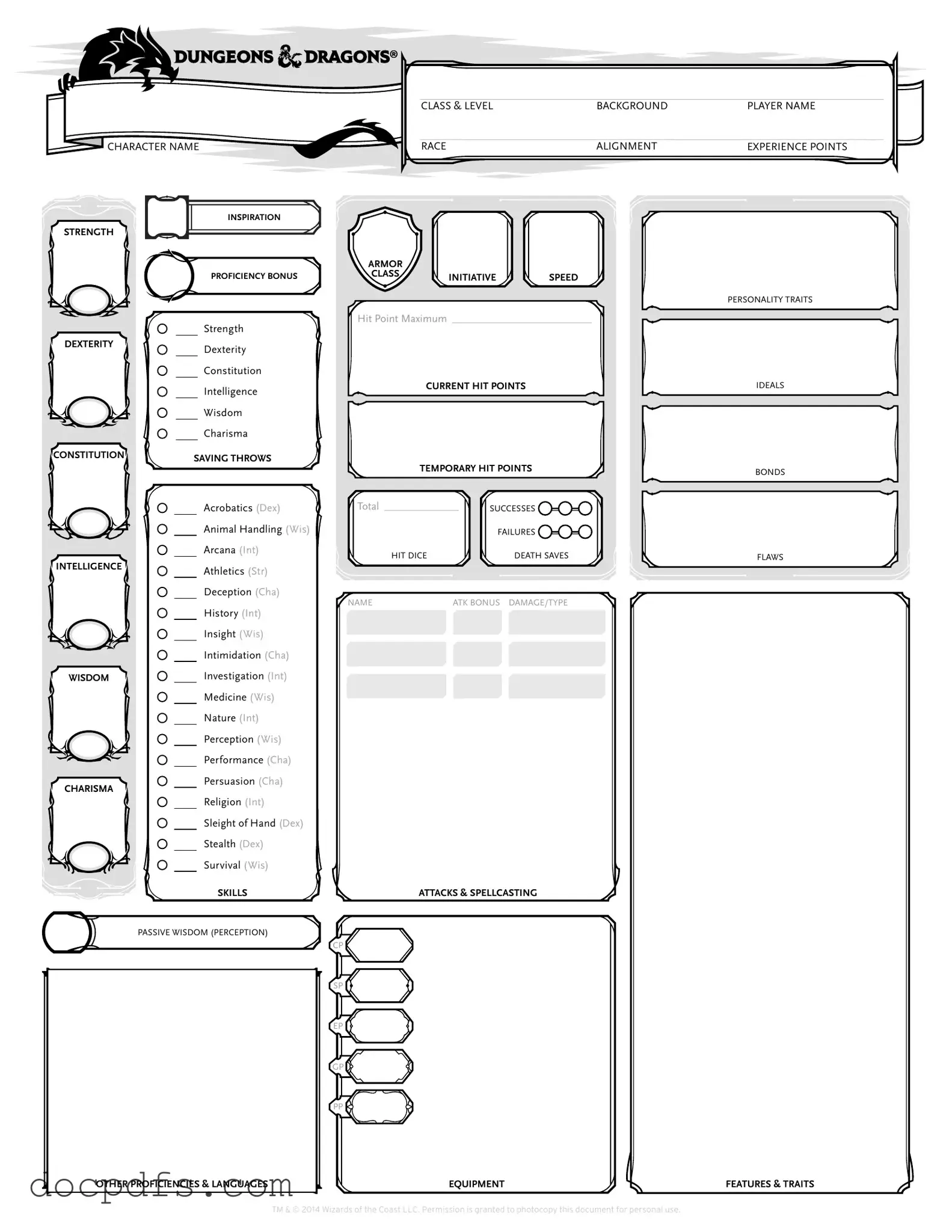What is a D&D Character Sheet?
A D&D Character Sheet is a document that players use to record all the essential information about their character in the game. This includes details like abilities, skills, equipment, and backstory. It serves as a reference during gameplay, helping players keep track of their character's stats and progress.
How do I fill out a D&D Character Sheet?
Filling out a D&D Character Sheet involves several steps:
-
Choose a character class and race.
-
Determine ability scores, which include Strength, Dexterity, Constitution, Intelligence, Wisdom, and Charisma.
-
Record your character's skills, proficiencies, and equipment.
-
Write down your character's background and personality traits.
-
Keep track of hit points and spell slots if applicable.
It’s important to refer to the Player's Handbook or online resources for guidance on each section.
Can I customize my Character Sheet?
Yes, you can customize your Character Sheet to fit your needs. Many players prefer to create their own sheets using templates or software. You can add additional sections or remove unnecessary ones based on your gameplay style. Just make sure it remains clear and easy to read.
Where can I find a D&D Character Sheet?
D&D Character Sheets are widely available online. You can find printable versions on the official Dungeons & Dragons website, or you can use digital versions through various apps. Many fan-created sheets are also available on platforms like Reddit or D&D forums.
What if I make a mistake on my Character Sheet?
Mistakes happen. If you notice an error, simply cross out the incorrect information and write the correct details next to it. If you’re using a digital sheet, you can easily edit the text. Keeping your sheet organized will help avoid confusion during gameplay.
How often should I update my Character Sheet?
It’s essential to update your Character Sheet regularly, especially after leveling up or acquiring new equipment. Each time your character gains experience points or new abilities, reflect those changes immediately. This ensures that you have the most accurate information during your sessions.
What is the importance of the backstory section?
The backstory section provides depth to your character. It helps define their motivations, personality, and relationships with other characters. A well-thought-out backstory can enhance your role-playing experience and make interactions with other players more engaging.
Do I need to bring my Character Sheet to every session?
Yes, bringing your Character Sheet to every session is crucial. It contains all the information you need to play effectively. Without it, you may struggle to remember important details about your character, which can hinder gameplay and the overall experience for you and your group.
What should I do if I lose my Character Sheet?
If you lose your Character Sheet, don’t panic. You can recreate it by recalling your character’s details. If you have access to previous sessions or notes, use those to help reconstruct the information. Many players also keep a digital backup to avoid this issue in the future.
